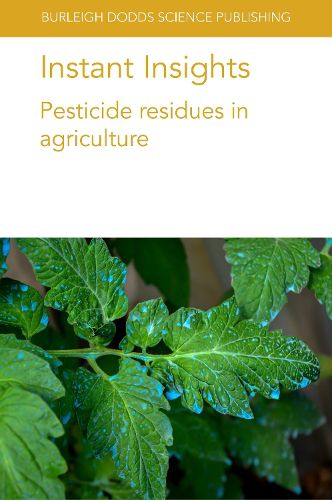Readings Newsletter
Become a Readings Member to make your shopping experience even easier.
Sign in or sign up for free!
You’re not far away from qualifying for FREE standard shipping within Australia
You’ve qualified for FREE standard shipping within Australia
The cart is loading…






This collection features three peer-reviewed literature reviews on pesticide residues in agriculture.
The first chapter outlines the ways in which pesticide use can lead to increased pest problems, such as pest resurgence and replacement, and the development of pesticide resistance. The chapter examines current strategies for mitigating the impacts of pesticides and refers to a detailed case study on the diamondback moth (DBM) to demonstrate the practical application of these strategies.
The second chapter explores the threat of pesticide poisoning to human health, either via deliberate self-poisoning or via occupational exposure. It discusses how best to monitor exposure to pesticides, as well as how to minimize the human health risks that may arise as a result of their use/exposure. The authors refer to a case study on smallholder cotton farmers in the Republic of Benin to emphasise the global pesticide poisoning crisis.
The final chapter reviews the environmental impacts of pesticide use in agriculture, focussing on their contribution to global human and ecological health issues. It provides an overview of how pesticides are currently addressed in emission inventory and impact assessment, and discusses the relevance of spatiotemporal variability in modelling emissions and the toxicity and ecotoxicity impacts of pesticides.
$9.00 standard shipping within Australia
FREE standard shipping within Australia for orders over $100.00
Express & International shipping calculated at checkout
This collection features three peer-reviewed literature reviews on pesticide residues in agriculture.
The first chapter outlines the ways in which pesticide use can lead to increased pest problems, such as pest resurgence and replacement, and the development of pesticide resistance. The chapter examines current strategies for mitigating the impacts of pesticides and refers to a detailed case study on the diamondback moth (DBM) to demonstrate the practical application of these strategies.
The second chapter explores the threat of pesticide poisoning to human health, either via deliberate self-poisoning or via occupational exposure. It discusses how best to monitor exposure to pesticides, as well as how to minimize the human health risks that may arise as a result of their use/exposure. The authors refer to a case study on smallholder cotton farmers in the Republic of Benin to emphasise the global pesticide poisoning crisis.
The final chapter reviews the environmental impacts of pesticide use in agriculture, focussing on their contribution to global human and ecological health issues. It provides an overview of how pesticides are currently addressed in emission inventory and impact assessment, and discusses the relevance of spatiotemporal variability in modelling emissions and the toxicity and ecotoxicity impacts of pesticides.